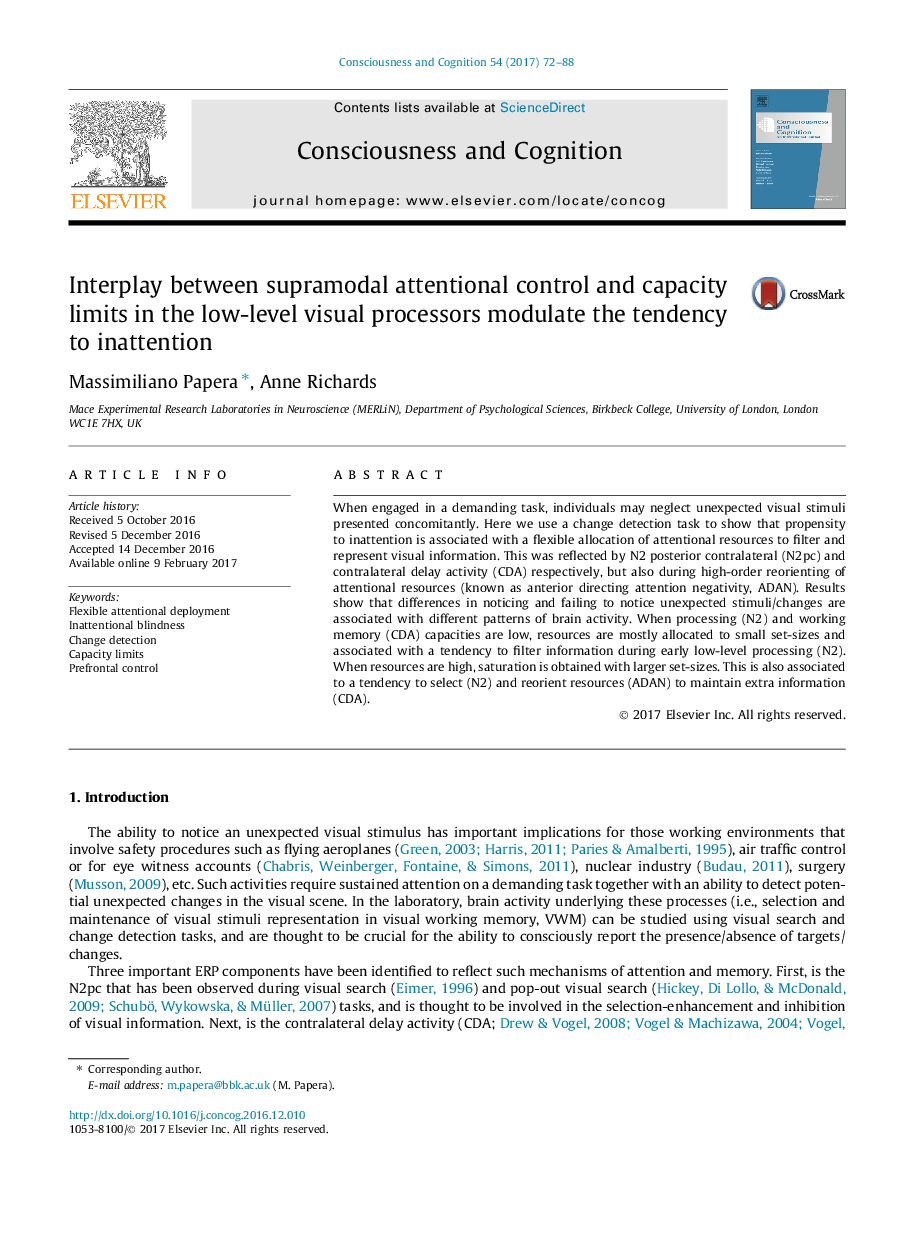| کد مقاله | کد نشریه | سال انتشار | مقاله انگلیسی | نسخه تمام متن |
|---|---|---|---|---|
| 5041724 | 1474157 | 2017 | 17 صفحه PDF | دانلود رایگان |
• Capacity limits can prevent visual stimuli from gaining access to awareness.
• A change detection task was used to estimate processing and memory capacity.
• Results show that resources are allocated flexibly depending on capacity limits.
• Larger capacity limits allow allocation of resources to unexpected stimuli.
• Smaller capacity limits drive a tendency to filter/not-attend information.
When engaged in a demanding task, individuals may neglect unexpected visual stimuli presented concomitantly. Here we use a change detection task to show that propensity to inattention is associated with a flexible allocation of attentional resources to filter and represent visual information. This was reflected by N2 posterior contralateral (N2pc) and contralateral delay activity (CDA) respectively, but also during high-order reorienting of attentional resources (known as anterior directing attention negativity, ADAN). Results show that differences in noticing and failing to notice unexpected stimuli/changes are associated with different patterns of brain activity. When processing (N2) and working memory (CDA) capacities are low, resources are mostly allocated to small set-sizes and associated with a tendency to filter information during early low-level processing (N2). When resources are high, saturation is obtained with larger set-sizes. This is also associated to a tendency to select (N2) and reorient resources (ADAN) to maintain extra information (CDA).
Journal: Consciousness and Cognition - Volume 54, September 2017, Pages 72–88
